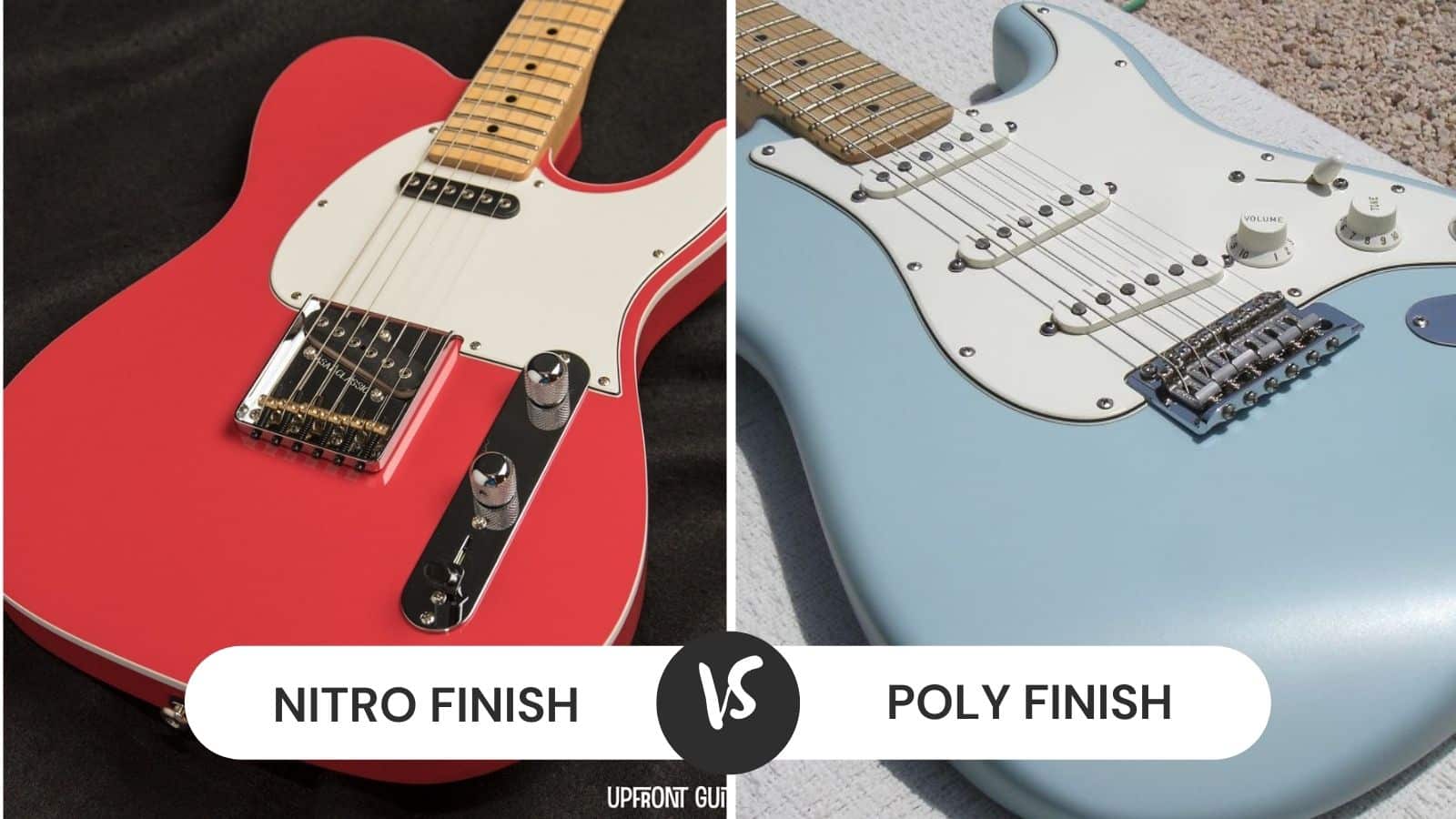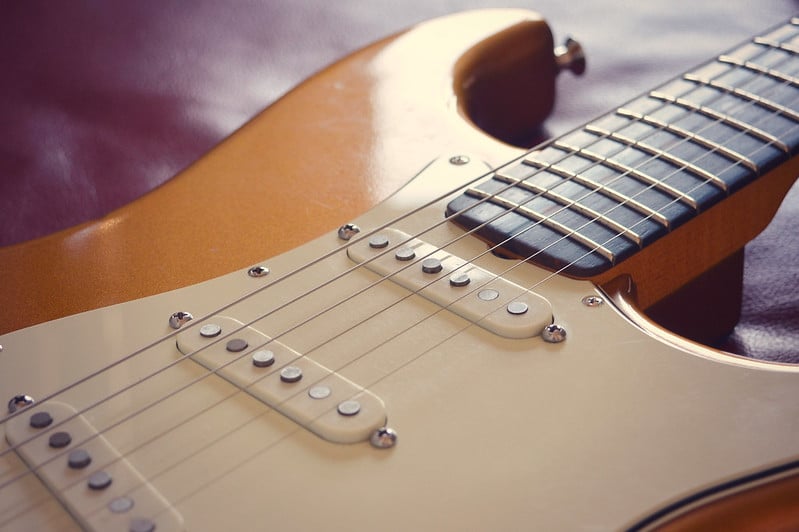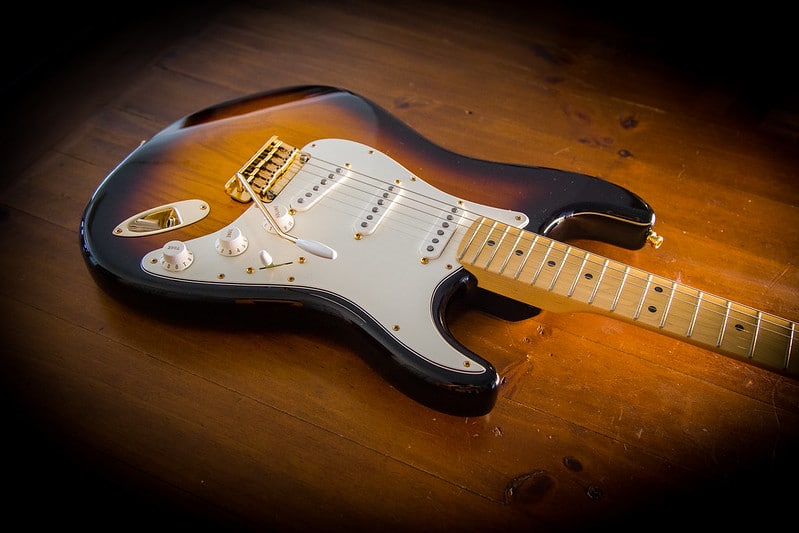
When it comes down to the guitar industry, there are various factors that split guitarists. Sure, you might think that it’s the type of guitar they use but it’s not the case.
In fact, guitarists are often categorized on the basis of what finish they prefer for their guitars. One might think that it’s a slight issue but it has become pretty contentious.
While old-school guitarists are a fan of nitro lacquers since it was more suited for vintage musical instruments. On the other hand, modern guitarists are into poly finish because it is sturdier and adds a glossy appearance to the guitar.
So, with this article, we are sharing nitro vs. poly finish, so you know the ins and outs of both to make an informed choice.
Comparing A Nitro vs Poly Finish
| Features | Nitro | Poly |
|---|---|---|
| Base | Solvent-based, often acetone | Polyurethane |
| Style | Older, often seen on vintage guitars | Newer, replaced nitro finishes on many new instruments |
| Porous? | Yes, slightly | Non-porous |
Nitro Finish
The nitro finish has been around for more than a century and it was first used for saxophones and acoustic music instruments.
However, in the 50s and 60s, the nitro finish became a preferred choice of Gibson and Fender, two of the biggest and premium guitar brands.
For the most part, they were using nitro finish for electric guitars and Fender also played around with acrylic.
Texture
On the other hand, the nitro finish was generally preferred for adding finishing to the guitars because it had better chances of adding gloss to the guitar.
The nitro finish is solvent-based and also has plant-based elements, such as sulfuric acids, nitric acid, and cotton. It also has a nitrocellulose element that works as a binding agent and is combined with the solvent to create a spray finish.
As far as the solvent is concerned, acetone is used which adds to the shine of the finish. It is actually a multi-day process since it has to be applied several times over the course of days and every coat is melted before the new one is added.
The process of melting the lacquer will deduct the need to sand the layers. Once the nitro finish application is complete, the solvent chemicals are left for dissolving.
As a result, the guitar will achieve a dry and resin-like texture, which is buffed with hands and sanded to achieve a glossy appearance. The nitro material is porous which creates a smooth and thin application that literally glides on.
The best thing about nitro finish is that it lets the guitar breathe, resulting in higher sustainability and open sound.
However, it is more vulnerable to cosmetic damages, which is why it needs proper storage to ensure the finish doesn’t wear off or fade away.
Vintage Appeal
If you’re thinking about buying a guitar that has a more vintage and classical feel to it, the nitro finish might be your choice.
The nitrocellulose finish is gorgeous and has been utilized by some of the largest guitar manufacturers of the day, including both Gibson and Fender.
In fact, while Fender has phased out nitro finishes on its Stratocasters, you can still find Gibson guitars with the nitro gloss on their necks and bodies.
Fender generally only adds this finish on its custom shop models, because the entire process to apply the finish is quite laborious and requires extra work.
The lacquer needs to be applied with precise consistency, otherwise one side of the surface might be slightly higher than the other.
The nitro finish is also porous, which makes it softer when felt. Some may consider this a double-edged sword, as the guitar gets slightly less durable.
Environmental Impact
In case you hit it on a raised edge, you might end up causing damage or scratches. More importantly, you should know that nitro finishes are generally high-VOC, which means that their use is quite regulated.
That is one of the reasons why you won’t see this finish on more expensive instruments.
It’s also important to note that nitro finishes are generally riskier for both the environment and for those who work with them.
As a result, it’s important to note that companies have to take extra steps to ensure the protection of employees.
If you care about the environment and want something that’s not as harmful, then you should absolutely consider going for the poly finish.
Poly Finish
The poly finish has actually become a standard in the guitar industry and has become a modern option.
The poly finish is widely used for mass guitar production and it was launched to hinder the adverse impacts of nitro finish that were caused to the environment. This is the prime reason that nitro finish has been regulated and needs to be monitored.
For this reason, the poly finish has become a safer choice and doesn’t pose any harm to the environment. This is primarily because the poly finish is based on synthetic resins and all the solvents harden on the guitar surface and are not left behind.
Therefore, there is no need for multiple applications of poly finishes, and are quite easy to apply and use (it’s quicker as well).
On top of everything, the poly finish is simple and has a thick texture, which makes it easy to apply.
In addition, the strong formulation results in a shiny or glossy look. Given the strong formulation, the guitars will actually be able to resist the cracks and also reduce the chances of contraction and expansion of the wood.
Resistance to Wear and Tear
Even more, the poly finish shows more resistance to wear and tear, which means the appearance of dings and scratches will be reduced.
Also, the poly finish will retain the shiny appearance even after years of regular use (even the most contacted areas won’t fade).
To conclude, it has the capacity of maintaining a showroom-like appearance. These are some reasons why poly finish has become a primary choice in the guitar industry and its fast and simple application actually makes it a reliable choice while cutting down the costs.
Polyurethane or Polyester?
It’s important to note that broadly speaking, there are two popular types of “poly” finishes, one including polyurethane and the other including polyester. When compared with its nitro counterpart, this one’s obviously much easier to apply.
As a result, it’s generally more suitable for use in mass production facilities. That’s one of the main reasons why this finish is commonly used on cheaper guitars too.
Arguably the biggest difference between nitro finishes and this one is the fact that the poly finish is considerably more durable. The finish it leaves behind is quite thick and hard, so it’s not going to damage your guitar over the passage of time.
Durability
More importantly, it handles wear and tear quite well, so you don’t have to worry about any major knocks to the wood as well.
The polyurethane finish is slightly more expensive, which is one of the main reasons why it’s mostly seen on premium guitar models, like the American-made Fender Stratocasters.
On the other hand, the polyester finish, which is the cheaper alternative, is generally seen on the Mexican-made Fender guitars. Polyurethane is softer and generally less thicker than polyester, which many guitarists usually prefer.
And, on top of that, they are also quite soft, giving that premium feeling that most guitarists want.
Plus, it’s not going to fade or sustain damage over time either, making it a fine choice for people who want an expensive instrument that isn’t going to lose its shine over time.
Which One Is the Better Choice?
The poly finish is by and large the better choice, primarily because it’s not harmful to the environment, and because it’s able to retain its sheen for longer. It’s also more durable than the nitro finish.
But, the reason why the nitro finish is still popular today is simply because of its vintage aesthetic. If you want a guitar that has that vintage 1950’s or 60’s aesthetic, then the nitro finish might be one to go with.




